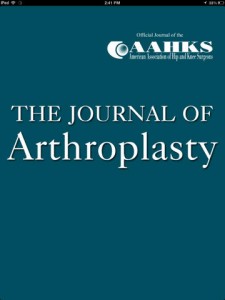Acetabular Component Positioning in Total Hip Arthroplasty With and Without a Computer-Assisted System: A Prospective, Randomized and Controlled Study
Henrique M.C. Gurgel, PhD, Alberto T. Croci, PhD, Henrique A.B.A. Cabrita, PhD, José Ricardo N. Vicente, PhD, Marcos C. Leonhardt, João Carlos Rodrigues
The Journal of Arthroplasty, Volume 29, Issue 1 , Pages 167-171, January 2014
Aim: To study the acetabular component positioning using imageless navigation compared with conventional technique
Level of Evidence: level 1 Randomised Control Trial
Methods: 40 patients undergoing THA were randomized into 2 groups; group 1 – 20 patients (navigated, NAV) and group 2 – 20 patients (conventional, CON). Post surgery, the operative inclination and anteversion of the acetabular component was studied with reference to the Lewinnek’s safe zone using computerised tomography.
Results: No statistical difference could be noted between the two techniques. 90% of the sockets in NAV group and 80% of the sockets in CON group were placed with in the safe zone (P = 0.661). The mean inclination was 41.7° in NAV group and 42.2° in the CON group (P = 0.663) and the mean anteversion in NAV group was 17.4° compared to 14.5° in the CON group (P = 0.215).
Conclusion: Computer navigation does not improve acetabular component positioning in total hip arthroplasty
Strengths: Randomised, Level I evidence
Weakness: small representative sample size
Ref
http://www.arthroplastyjournal.org/article/S0883-5403(13)00310-0/abstract
Submitted by Dr Ashok Gavaskar
Leave a Reply